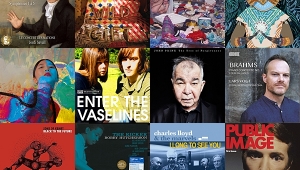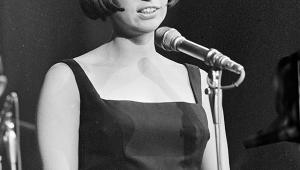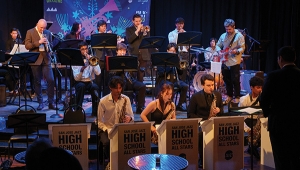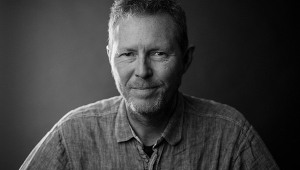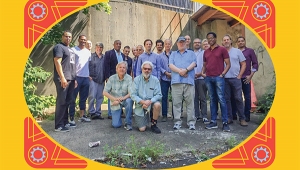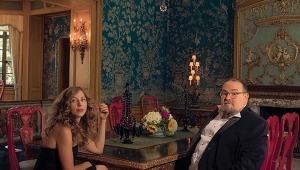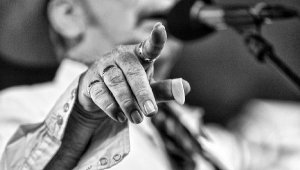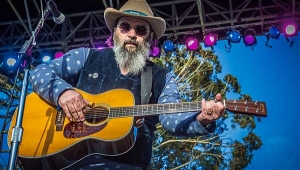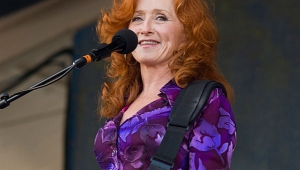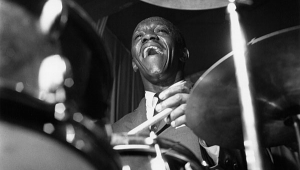| Columns Retired Columns & Blogs |
Leslie Ann Jones: Recording's Future Now Page 2
"Ultimately, I try to be as helpful and collaborative as I can. I try to think of ways I can make it better rather than just throwing up my hands in frustration. I want people to succeed. This approach has something to do with my politics and railing against being raised in a somewhat privileged atmosphere where I went to private schools.
"It also has to do with what I've become since I got to Skywalker, and the similarity between what we try to do in scoring and what the rest of the building does. Our approach springs from George [Lucas]'s vision to design a space for inventions that would enable him to create the movies he wanted. Pixar and Industrial Light & Magic (ILM) all came out of George's work. So I learned how to do things, because figuring out how to do things is the culture of the company. At Skywalker, everyone expects it to be great. In many ways, we have to live up to that expectation and exceed it. You can't let your guard down."
For Jones, the so-called division between the "pro" and "audiophile" worlds does not exist. To her, Skywalker is an audiophile workspace in harmony with the best both spheres can offer.
When Skywalker redid its studio in 2008, she looked at the Bowers & Wilkins loudspeakers she was then using for two-channel and the Wilson WATT 5/Puppies she called upon for multichannel and chose new components that would work well for classical music and film scores. Since numerous studios, including Sony in New York and Abbey Road in London, were using Bowers & Wilkins with Chord amplifiers, and many of her clients frequented those studios, she installed a system for immersive-audio recording and mixing. The three front speakers and the two rears are all Bowers & Wilkins Nautilus 802s, these augmented by ASW4000 subwoofers (only the center one plays the .1 track), and several Neumann 310 monitors. Speaker cables for the Bowers & Wilkins are MIT, and the control room and scoring stage use high-quality pro cables from Canare, Whirlwind, and other companies.
"I have B&W 703s at home because they have the same character of sound as I have in the studio, which enables me to hear things the same way when I work at home."
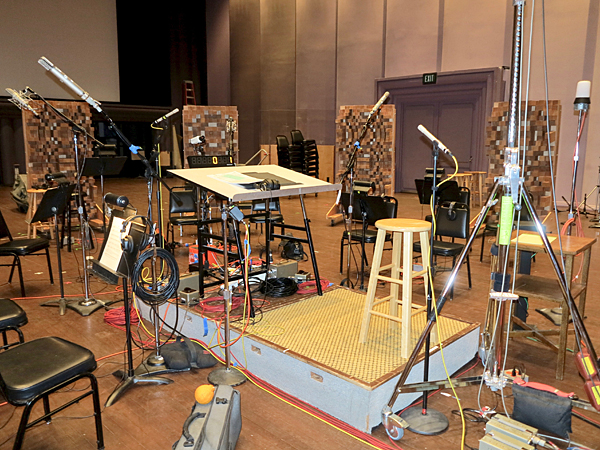
Setup for a Skywalker Studios recording session.
How does she know where to start with a new project? "We always have discussions with artists and producers about what kind of sound they're after. There are many things to consider, including the nature of the music, what it's being used for, and the size of the orchestra. With us, it starts with the sound of the room—we can adjust the panels on the stage incrementally to alter the sound of the room—the choice of microphones, then the cables, then the microphone preamps. Whether we go directly through the console or directly to the recorder, as a lot of people do when they use the console just for monitoring purposes, depends on how we can best maintain the integrity of the sound.
"I do a lot of video game scores that have big brass sections and a massive, energetic sound where the strings do a lot of activity. Older tube microphones work well for the section mikes where people will be pushing a lot of air—they have a bit warmer sound than condenser mikes. There are no love themes in video [game] music; it's all battle stuff and war and action stuff. I often like to balance that with a warmer mike that has a wider range and can record more people than a smaller-diaphragm microphone. Then for the Decca tree, taken from Decca Records' early stereo and three-track recordings, which captures the overall sound of the room, I'll use pristine, cleaner-sounding condenser mikes. Or I might do the opposite, using more focused mikes on the instruments and warmer tube mikes for the room to get a warmer picture."
Having a voice
When Jones first started working at David Rubinson's The Automatt, the San Francisco chapter of the Recording Academy met in the same building. Within a year or two, she was asked to join colleagues and people she admired on the organization's board. She became the first female chair of the National Board of the Academy and, at one point, also cochaired the Awards and Nomination committee. She currently serves as one of three San Francisco trustees on the Academy's national board.
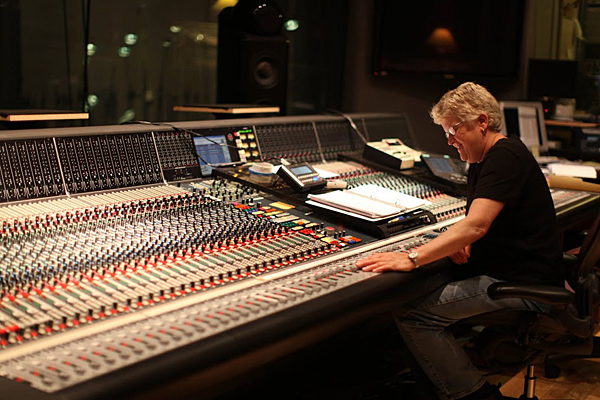
When I first met Jones at the Consumer Electronics Society show five or six years ago, she was chairing the Academy subcommittee that wrote production and engineering guidelines for high-resolution recording and was busy preaching high-resolution recording to labels that were not already on board. "The Producers and Engineers Wing of the Academy, as well as initiatives promoted by Marc Finer and the Digital Entertainment Group, intended hi-rez to be anything better than CD quality in both bit rate and sampling rate," she said. "It's unfortunate that some people are calling 24/44.1 'hi-rez' or, to confuse matters even more, 'HD.' I would rather it be 24/48, which is hi-rez because it's already higher. Nonetheless, now that Amazon HD and Apple have come on board with high-resolution downloads, I feel that we've scored a major victory."
"People like me, who are primarily nonperforming producers and engineers, are in a dark room most of the time working with one or two people. We sometimes don't even have an opportunity to share our thoughts on matters not directly related to what we are doing. Beginning to volunteer with the Academy gave me a way to articulate my thoughts and be able to give back at a time when I was growing in this industry. It also gave me an opportunity to hang out with people who were from all music disciplines and genres. That led me to appreciate that everyone is valuable, everyone's opinion matters, and everybody comes from their own place, and that's okay. If you're willing to let it affect you that way, and I was, you get to hang out with great people and have a voice.
"The reason I've stayed involved is because it continues to give me a voice. At this point in my career, it's how I give back. I do a lot of panels and workshops apart from the Academy....[G]iven the Academy's Grammy Awards, MusiCares, Grammy Museum Foundation, and other advocacy activities, there's no better place to give back and raise the level of our industry. Anybody can release a CD and stream music. How do we make them into professionals who can make this into a lifelong passion and support themselves in the music business? That's where the chapters come in. They have a direct link to their members. Together, we keep the bar up for Grammy members.
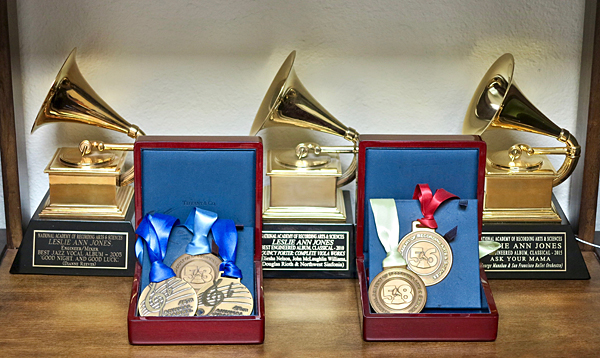
LAJ's Grammy Awards shelf.
"It's life-changing when you get nominated. For me personally, knowing how hard it is to get nominated, when my name is on that list I go 'Holy shit!' I know the gauntlet my recording has to go through to compete with all those other recordings and end up one of five nominees that someone thinks is good enough to win a Grammy."
Jones's first statue was for engineering 2003's Best Chamber Music Performance, the Kronos Quartet's recording of Alban Berg's Lyric Suite. It was her first Kronos recording at Skywalker; she shared the award with producer Judith Sherman, soprano Dawn Upshaw, and the members of the Kronos Quartet. (She was also nominated for that year's Best Engineered Album, Classical.) Then came the 2005 Grammy for Best Jazz Album, for Dianne Reeves's Good Night, and Good Luck (Music from and Inspired by the Motion Picture); that Grammy was shared with producer Allen J. Sviridoff and engineer Charles Paakkari.
Her third Grammy was for 2010's Best Engineered Album, Classical, for Eliesha Nelson and John McLaughlin Williams's recording, Quincy Porter: Complete Viola Works, which was shared with engineers Kory Kruckenberg, Brandie Lane, and David Sabee; the same year, she received another nomination in the same category. In 2015, she won a Grammy for Ask Your Mama, again for Best Engineered Album, Classical; the award was shared with engineers John Kilgore, Nora Kroll-Rosenbaum, and Justin Merrill and mastering engineer Patricia Sullivan. She was involved in the project from its beginning, when it was workshopped at the University of Michigan, and was the sound designer and live sound mixer in Carnegie Hall. That year she received two other Grammy nominations. Finally—so far—in 2019, she won in the same category for Terry Riley: Sun Rings, with John Kilgore, Judith Sherman, and David Harrington, engineers/mixers and Bob Ludwig, mastering engineer.
Jones often speaks on panels, serving as a role model for younger women coming up in the industry. On June 9, she spoke on the "Stay In, Come Out, Let's Talk" panel of the Recording Academy of Los Angeles Chapter, the focus of which was on navigating the industry as a member of the LGBTQIA+ community.
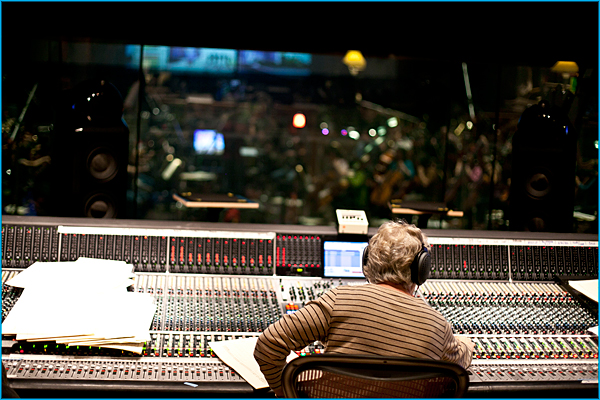
"My gender is an important thing to me, but it doesn't inform my work so much," she confides. "Being gay doesn't inform my work either, really. I am who I am, so what you get is the whole me.
"The only time my gender informed my work was in the '70s and '80s when I was working on women's projects—music written by women, performed and recorded by women, and released by women-owned labels. I think that really helped develop some of my collaborative ideas and allowed me to identify with the effort to get women out there and bypass the whole record company system that was basically run by men back then. The situation has only gotten marginally better since.
"There was a time when I decided I wouldn't do any more panels about gender; I wanted to be seen as a peer and be on a panel with guys. I wanted someone to ask me what kind of microphone I use on a snare drum or how I recorded this or did that as opposed to what it's like being a female in the industry. Now, of course, with DEI [diversity, equity, and inclusion] initiatives promoting women in nontraditional roles, I'm out there much more talking about gender."
"Over the course of my career, I've come to understand that gender is part of who I am and what I bring to a project. People hire me because I'm a good engineer, or because I'm a woman engineer, or both. Some people don't hire me because of whatever reason, and some don't hire me because I'm a woman engineer. I'll never know. I just show up every day and try to figure out how to make the best recording possible. And that's that."
- Log in or register to post comments
